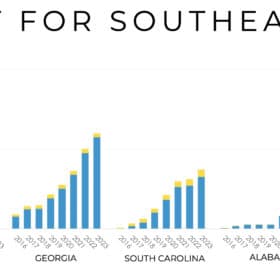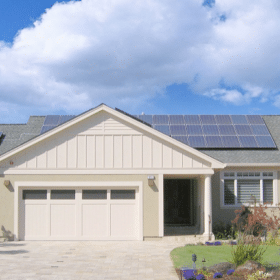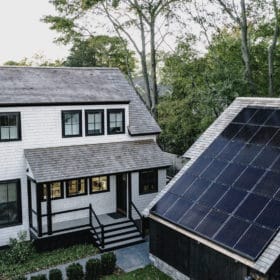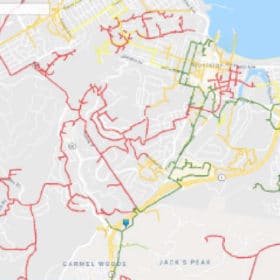PV module prices are falling faster than all predictions
New research from Wood Mackenzie shows that overall system costs for installations using mono PERC modules are set to fall by as much as 20% by 2025.
Southeast states to add nearly 15 GW of solar by 2023
South Carolina is set to surpass North Carolina in solar watts per customer. Georgia and Florida will exceed the Southeast average, while utilities in Tennessee, Alabama and Mississippi will continue to lag. Overall the states will reach 5% solar generation by 2023.
House’s $1.5 trillion infrastructure bill packed with pro-solar, pro-storage provisions
In addition to making the stand-alone energy storage investment tax credit (ITC) eligible and extending a 30% solar ITC through 2025, the House bill creates a direct pay mechanism that can be used in lieu of the ITC.
Advocates seek solar on all new houses in ten states
“The most efficient time to install solar panels is when the builders are on the roof in the first place,” said Bronte Payne with Environment America.
Energy job moves at Fluence, Avangrid, Sunfolding, Sunrun, juwi, BEI, Energy Foundation, Kanin Energy
Executive, career and boardroom moves in solar, storage, cleantech, utilities and energy VC.
KB Home is now installing SunPower’s building-integrated solar racking system on new homes
SunPower has captured more than 50% market share with new solar builds in the state.
Did I mention I’m a certified solar installer?
The bullshit women deal with every day. A solar veteran and company founder shares some stories.
Vivint Solar joins EnergyHub in expanding PV and storage demand response programs
Can programs like EnergyHub and National Grid’s battery-powered DR turn utilities into residential solar fans?
PetersenDean, a regional solar installer and roofer, seeks chapter 11 bankruptcy protection
PetersenDean came to solar from the roofing world and has long been a top-ten U.S. solar installer with a multi-state regional practice.
Solar hosting capacity maps must be accurate to be useful
Solar hosting capacity maps, now required in seven states, show where solar can be added on a distribution circuit without incurring any grid expense—but only if those maps are accurate. California’s experience, says a policy paper, shows that best practice guidelines for validating maps are needed to aid state regulators.















